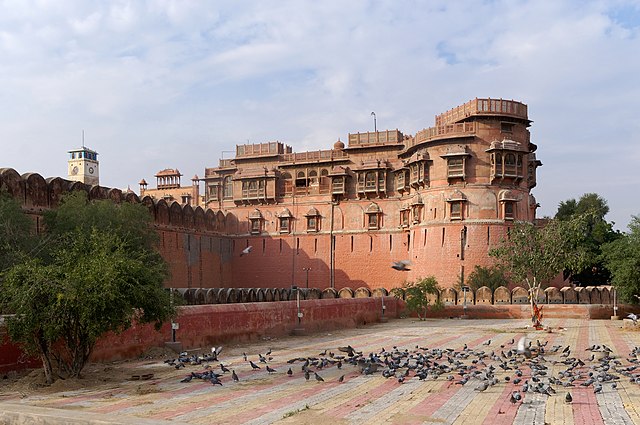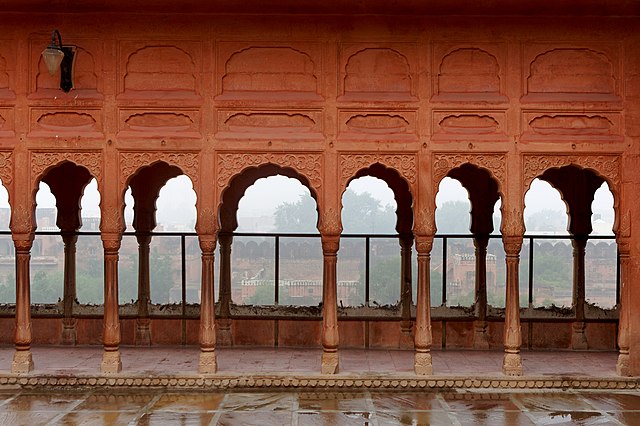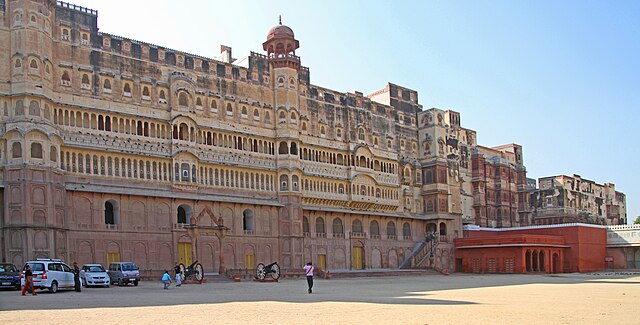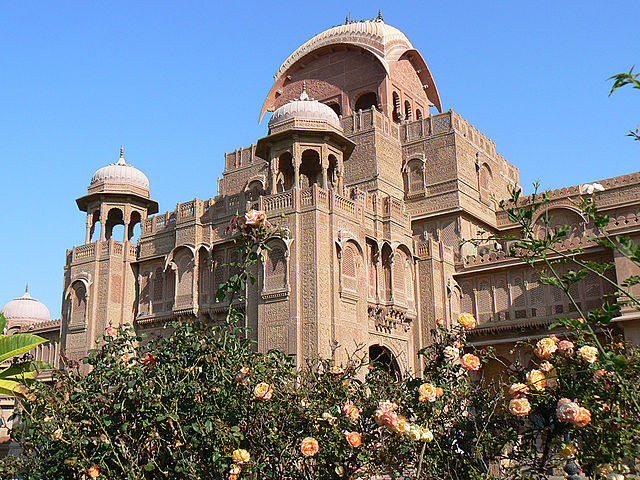Have you ever wondered what it feels like to step into a living fairy tale? Welcome to Bikaner, where golden sandstone walls whisper ancient stories and the desert breeze carries the aroma of legendary snacks that have conquered taste buds across India. This remarkable city in Rajasthan isn’t just another tourist destination – it’s a treasure trove of experiences waiting to unfold.
Nestled in the heart of the Thar Desert, Bikaner stands as a testament to human resilience and architectural brilliance. Unlike its more famous cousins like Jaipur or Udaipur, Bikaner offers an authentic, less commercialized glimpse into Rajasthan’s soul. But what makes this desert city so special that travelers from around the world make the journey across the sandy expanse?
What Makes Bikaner Special?
Picture this: you’re walking through streets where every building tells a story, where the very air seems infused with centuries of tradition, and where modern life seamlessly blends with ancient customs. That’s Bikaner for you – a city that refuses to let go of its roots while embracing the present.
Historical Significance of Bikaner
Founded in 1488 by Rao Bika, a Rajput prince who dared to venture into the unforgiving Thar Desert, Bikaner emerged as a crucial trading post on the ancient caravan routes. Can you imagine the courage it took to establish a city in such harsh terrain? Yet, this bold vision transformed a barren landscape into a thriving kingdom that controlled the lucrative trade between Central Asia and Gujarat.
The city’s strategic location made it incredibly wealthy, and this prosperity is evident even today in its magnificent palaces, elaborate havelis, and imposing forts. Every stone here has witnessed the rise and fall of dynasties, the passage of merchant caravans laden with silk and spices, and the transformation of a desert outpost into a cultural powerhouse.
Cultural Heritage and Traditions
What sets Bikaner apart is how fiercely it guards its cultural identity. Walk through the old city, and you’ll encounter artisans practicing crafts passed down through generations – from intricate carpet weaving to delicate miniature paintings. The city breathes tradition, yet it’s not stuck in the past.
Local festivals here aren’t just celebrations; they’re living museums where you can witness age-old customs in their authentic form. The warmth of Bikaneri hospitality will make you feel like family, and before you know it, you’ll be sharing stories over endless cups of masala chai with locals who treat every visitor as a honored guest.
Top Attractions in Bikaner

Ready to explore the crown jewels of this desert kingdom? Bikaner’s attractions aren’t just sightseeing spots – they’re portals to different eras of history, each with its own fascinating tale to tell.
Junagarh Fort: An Architectural Marvel
If Bikaner has a crown jewel, it’s undoubtedly the magnificent Junagarh Fort. But here’s what makes it truly extraordinary – unlike most Rajasthani forts perched dramatically on hilltops, Junagarh stands proudly on plain land, yet it has never been conquered. Isn’t that remarkable?
Built in the 16th century by Raja Rai Singh, this fort is a masterpiece of military architecture combined with artistic brilliance. As you walk through its ornate halls, you’ll discover that each room tells a different story. The Anup Mahal with its exquisite mirror work will leave you spellbound, while the Chandra Mahal’s delicate paintings showcase the artistic finesse of bygone eras.
The fort houses several palaces within its walls, each representing different periods of construction and architectural styles. From the intricate stone carvings to the beautiful frescoes adorning the ceilings, every corner of Junagarh Fort is a photographer’s dream and a history lover’s paradise.
Karni Mata Temple: The Famous Rat Temple
Now, here’s something you won’t find anywhere else in the world – a temple where rats are worshipped as divine beings! The Karni Mata Temple, located about 30 kilometers from Bikaner in Deshnoke, is home to thousands of rats considered sacred and called “kabbas.”
Legend has it that these rats are reincarnations of Karni Mata’s devotees, and spotting a white rat among them is considered extremely auspicious. While the idea might seem unusual at first, the temple’s spiritual significance and the devotion of its visitors create an atmosphere of profound reverence that’s genuinely moving to witness.
Lalgarh Palace: Royal Grandeur
Ever wondered what it feels like to live like royalty? Lalgarh Palace gives you that opportunity. Built in the early 20th century by Maharaja Ganga Singh, this architectural wonder combines Rajputana, Mughal, and European styles into something breathtakingly beautiful.
Today, part of the palace serves as a heritage hotel, allowing visitors to experience royal luxury firsthand. The palace’s museum showcases an impressive collection of photographs, hunting trophies, and artifacts that provide fascinating insights into the royal lifestyle of Bikaner’s rulers.
National Research Centre on Camel
Did you know that Bikaner is home to one of the world’s premier camel research facilities? The National Research Centre on Camel is where science meets tradition, working to preserve and study these magnificent “ships of the desert” that have been Rajasthan’s lifeline for centuries.
Here, you can learn about different camel breeds, their unique characteristics, and their crucial role in desert survival. It’s not just educational – it’s a tribute to the remarkable relationship between humans and these resilient animals that have shaped desert civilization.
Best Time to Visit Bikaner
Timing your visit to Bikaner can make the difference between a memorable trip and an unforgettable adventure. The desert climate here is extreme, but knowing when to visit can help you make the most of your journey.
Weather Patterns Throughout the Year
The best time to visit Bikaner is undoubtedly during the winter months from October to March. During this period, the weather is pleasantly cool, with daytime temperatures ranging from 20-25°C and nights getting surprisingly chilly, sometimes dropping to 5-10°C. It’s like the desert finally takes a deep breath after the scorching summer months.
Summer (April to June) can be brutally hot, with temperatures soaring above 45°C. However, if you’re someone who wants to experience the true intensity of desert life, summer visits offer their own unique charm – just make sure you’re well-prepared with plenty of water and sun protection.
The monsoon season (July to September) brings sporadic rainfall that transforms the arid landscape into something unexpectedly green and beautiful. It’s a sight few tourists get to witness, making it a hidden gem for adventurous travelers.
Festival Seasons and Events
Want to see Bikaner at its most vibrant? Plan your visit around the Camel Festival, typically held in January. This colorful celebration showcases the region’s deep connection with camels through races, folk performances, and cultural exhibitions that’ll give you goosebumps.
The Karni Mata Fair in March-April is another spectacular event where thousands of devotees gather at the rat temple, creating an atmosphere of incredible devotion and cultural richness that’s both overwhelming and enlightening.
Famous Food and Cuisine of Bikaner

Let’s talk about something that puts Bikaner on the global map – its incredible food! This city has given India some of its most beloved snacks, and the culinary traditions here are as rich as its history.
Bikaneri Bhujia: The Pride of the City
When someone mentions Bikaner, the first thing that comes to most Indians’ minds is the famous Bikaneri Bhujia. This isn’t just a snack – it’s a culinary legacy that has made Bikaner a household name across India and beyond. The secret recipe, perfected over generations, creates that perfect balance of spice, crunch, and flavor that’s impossible to replicate.
Local families have been making bhujia for over a century, and watching the process is like witnessing edible art being created. The thin strands of gram flour, perfectly spiced and fried to golden perfection, represent not just a snack but the entrepreneurial spirit of Bikaner that has conquered markets worldwide.
Traditional Rajasthani Delicacies
But Bikaner’s culinary story doesn’t end with bhujia. The city serves up some of the most authentic Rajasthani cuisine you’ll ever taste. Dal baati churma here isn’t just food – it’s an experience that connects you to the desert’s survival cuisine, developed over centuries to provide maximum nutrition in harsh conditions.
The ghevar, kachori, and samosas available in local shops will spoil you for life. Each bite carries the essence of desert spices and the warmth of traditional cooking methods that have remained unchanged for generations.
Best Places to Eat in Bikaner
For the most authentic experience, head to the local markets where small shops have been serving the same families for decades. Chhotu Motu Joshi Sweet Shop and Bikaner Sweets are legendary establishments where recipes are closely guarded family secrets.
Don’t miss the street food scene around the old city, where vendors serve piping hot kachoris and samosas that’ll make you question every snack you’ve ever had before. The experience of eating freshly made bhujia while sitting in a traditional Rajasthani setting is something that’ll stay with you long after you’ve returned home.
Shopping in Bikaner
Shopping in Bikaner isn’t just about buying souvenirs – it’s about taking home pieces of a living culture that has thrived in the desert for centuries.
Local Handicrafts and Souvenirs
The handicrafts here reflect the ingenuity of desert dwellers who learned to create beauty from the simplest materials. Leather goods, particularly the famous Bikaner camel leather items, are not just products but testimonies to the craft skills passed down through generations.
The carpets and rugs woven here are masterpieces of geometric patterns and natural dyes that tell stories of nomadic traditions. Each piece is unique, carrying the individual touch of the artisan who created it with patience and skill that machine production can never replicate.
Best Markets and Shopping Areas
The old city’s narrow lanes are treasure troves where every shop seems to hide some unique artifact. Kote Gate and Station Road are particularly famous for authentic handicrafts, while the area around Junagarh Fort offers the best selection of traditional items.
Don’t rush your shopping experience here. Take time to interact with shopkeepers who are often artisans themselves and can tell you fascinating stories about the items they’re selling. Bargaining is expected and part of the cultural experience, but remember to be respectful and fair.
Accommodation Options
Where you stay in Bikaner can significantly enhance your travel experience, and the city offers options that cater to every budget and preference.
Luxury Hotels and Heritage Properties
For those seeking royal treatment, heritage hotels like Lalgarh Palace and Ganga Golden Jubilee Museum offer experiences that transport you to the era of maharajas. These aren’t just accommodations – they’re immersive historical experiences where every meal feels like a royal feast and every room tells a story.
The attention to detail in these properties is remarkable, from traditional Rajasthani décor to modern amenities seamlessly integrated into historical settings. Staying here gives you access to stories and experiences that regular tourists miss.
Budget-Friendly Stays
Budget travelers aren’t left out of Bikaner’s hospitality. Numerous guesthouses and budget hotels offer clean, comfortable accommodation with that characteristic Rajasthani warmth. Many family-run establishments provide home-cooked meals and personal attention that makes your stay memorable despite the modest pricing.
Hostels and dharamshalas near major attractions offer basic but adequate facilities for backpackers and budget-conscious travelers who prefer spending their money on experiences rather than luxury accommodations.
How to Reach Bikaner
Getting to Bikaner has become increasingly convenient, with multiple transportation options connecting this desert city to major Indian destinations.
By Air, Rail, and Road
The nearest major airport is in Jodhpur, about 250 kilometers away, though Bikaner has its own small airport with limited connectivity. Most travelers prefer the train journey, which offers scenic views of the changing landscape as you approach the desert region.
Bikaner Junction is well-connected to major cities like Delhi, Mumbai, Jaipur, and Jodhpur. The train journey from Delhi takes about 8-10 hours, making it a convenient overnight option that saves on accommodation while providing a uniquely Indian travel experience.
By road, Bikaner is accessible via well-maintained highways, and the drive through Rajasthan’s countryside offers beautiful glimpses of rural life and desert landscapes that you’ll miss if you fly or take the train.
Local Transportation
Within Bikaner, auto-rickshaws and cycle-rickshaws are the most common modes of transport. Many attractions are within walking distance of each other in the old city, making exploration on foot both practical and enjoyable.
For longer distances or day trips, hiring a taxi or booking a guided tour can be more convenient and often more economical when traveling in groups. Local drivers often double as informal guides, sharing stories and insights that enrich your experience.
Things to Do in Bikaner
Bikaner offers experiences that go beyond typical sightseeing, allowing you to immerse yourself in desert culture and create memories that last a lifetime.
Desert Safari Adventures
No visit to Bikaner is complete without experiencing the desert that shaped its character. Camel safaris offer an authentic way to explore the Thar Desert, providing perspectives on desert life that you can’t get from books or documentaries.
These aren’t just rides – they’re journeys into a way of life that has adapted to one of the world’s harshest environments. Watching the sunset from camel-back while listening to folk songs under the vast desert sky is an experience that touches something deep in the human soul.
Cultural Experiences

Participating in local festivals, watching traditional puppet shows, or learning about folk music from local artists provides insights into a culture that has maintained its identity despite centuries of change. These interactions often lead to friendships and invitations to local homes, offering glimpses into authentic Rajasthani family life.
Day Trips from Bikaner
Bikaner’s location makes it an excellent base for exploring other fascinating destinations in the region.
Nearby Attractions Worth Visiting
The ghost town of Kuldhara, about 200 kilometers away, offers a mysterious glimpse into Rajasthan’s abandoned past. Jaisalmer, though further away, makes for an excellent extended trip combining two unique desert experiences.
Closer destinations like Deshnoke (for the Karni Mata Temple) and various villages known for specific crafts provide day-trip opportunities that showcase the diversity of desert culture and traditions.
Travel Tips for Bikaner
Successful travel to Bikaner requires some preparation and understanding of local conditions and customs.
What to Pack and Prepare
Desert travel requires specific preparation. Sunscreen, comfortable walking shoes, and layers of clothing are essential due to the extreme temperature variations between day and night. Don’t forget a good camera – the photogenic opportunities in Bikaner are endless.
Carry plenty of water, especially during summer months, and be prepared for dust. A good quality scarf or bandana can be invaluable for protecting against sand and sun.
Cultural Etiquette and Local Customs
Respecting local customs enhances your experience and shows appreciation for the culture you’re visiting. Dress modestly, especially when visiting temples, and remove shoes when required. Learning a few basic Hindi or Rajasthani phrases goes a long way in connecting with locals.
Photography etiquette is important – always ask permission before photographing people, and be respectful in religious places. Remember that you’re a guest in someone else’s home and culture.
Conclusion
Bikaner isn’t just a destination – it’s a journey into the heart of what makes Rajasthan magical. From the unconquered walls of Junagarh Fort to the aromatic streets filled with the scent of fresh bhujia, from the spiritual atmosphere of the Karni Mata Temple to the royal elegance of Lalgarh Palace, this desert city offers experiences that linger in your memory long after you’ve returned home.
What makes Bikaner truly special is its authenticity. In a world increasingly dominated by commercialized tourism, Bikaner remains genuine – a place where traditions aren’t performed for tourists but lived by locals, where hospitality isn’t a business strategy but a way of life, and where every experience feels real and meaningful.
Whether you’re drawn by history, fascinated by culture, tantalized by cuisine, or simply seeking adventure in one of India’s most unique landscapes, Bikaner delivers experiences that exceed expectations. It’s a reminder that sometimes the most rewarding destinations are not the most famous ones, but those that offer genuine connections to places, people, and traditions that have stood the test of time.
Frequently Asked Questions
Q1: How many days should I spend in Bikaner?
A: Ideally, 2-3 days are sufficient to explore Bikaner’s main attractions comfortably. This allows time for visiting Junagarh Fort, the Karni Mata Temple, shopping in local markets, and enjoying a desert safari without rushing. If you’re interested in day trips to nearby attractions or want to immerse yourself deeper in local culture, consider extending your stay to 4-5 days.
Q2: Is it safe for solo female travelers to visit Bikaner?
A: Yes, Bikaner is generally safe for solo female travelers. The locals are hospitable and respectful, and tourist areas are well-patrolled. However, as with any destination, it’s advisable to take standard precautions like avoiding isolated areas after dark, dressing modestly (especially when visiting religious sites), and staying in reputable accommodations. Many solo female travelers have had wonderful experiences in Bikaner.
Q3: What’s the best way to experience authentic Bikaneri cuisine?
A: For the most authentic experience, venture beyond hotel restaurants to local establishments and street food vendors. Visit traditional sweet shops like Chhotu Motu Joshi, try street food near Kote Gate, and don’t miss the opportunity to taste fresh bhujia from local manufacturers. Many heritage hotels also offer cooking classes where you can learn to prepare traditional dishes yourself.
Q4: Can I visit Bikaner during summer months, and what should I expect?
A: While summer (April-June) is extremely hot with temperatures exceeding 45°C, it’s still possible to visit with proper preparation. Start your sightseeing very early in the morning, take afternoon breaks in air-conditioned spaces, and carry plenty of water and sun protection. Summer visits offer the advantage of fewer crowds and lower accommodation prices, plus you’ll experience the true intensity of desert life.
Q5: What makes Bikaner different from other popular Rajasthani cities like Jaipur or Udaipur?
A: Bikaner offers a more authentic, less commercialized experience compared to Jaipur or Udaipur. It’s the only major Rajasthani city built in the desert rather than near water bodies or hills, giving it a unique character. The city is famous for its unconquered fort, sacred rat temple, and being the birthplace of India’s most famous snack. It provides insights into desert survival culture and maintains stronger connections to traditional ways of life, making it perfect for travelers seeking genuine cultural experiences over polished tourist attractions.

